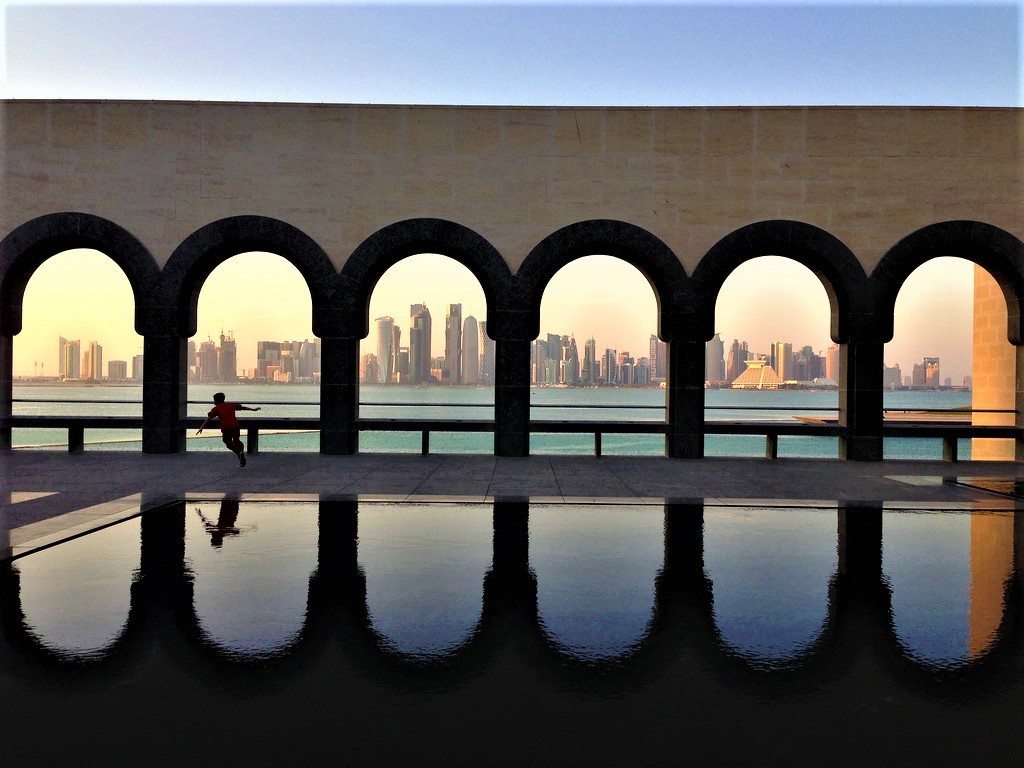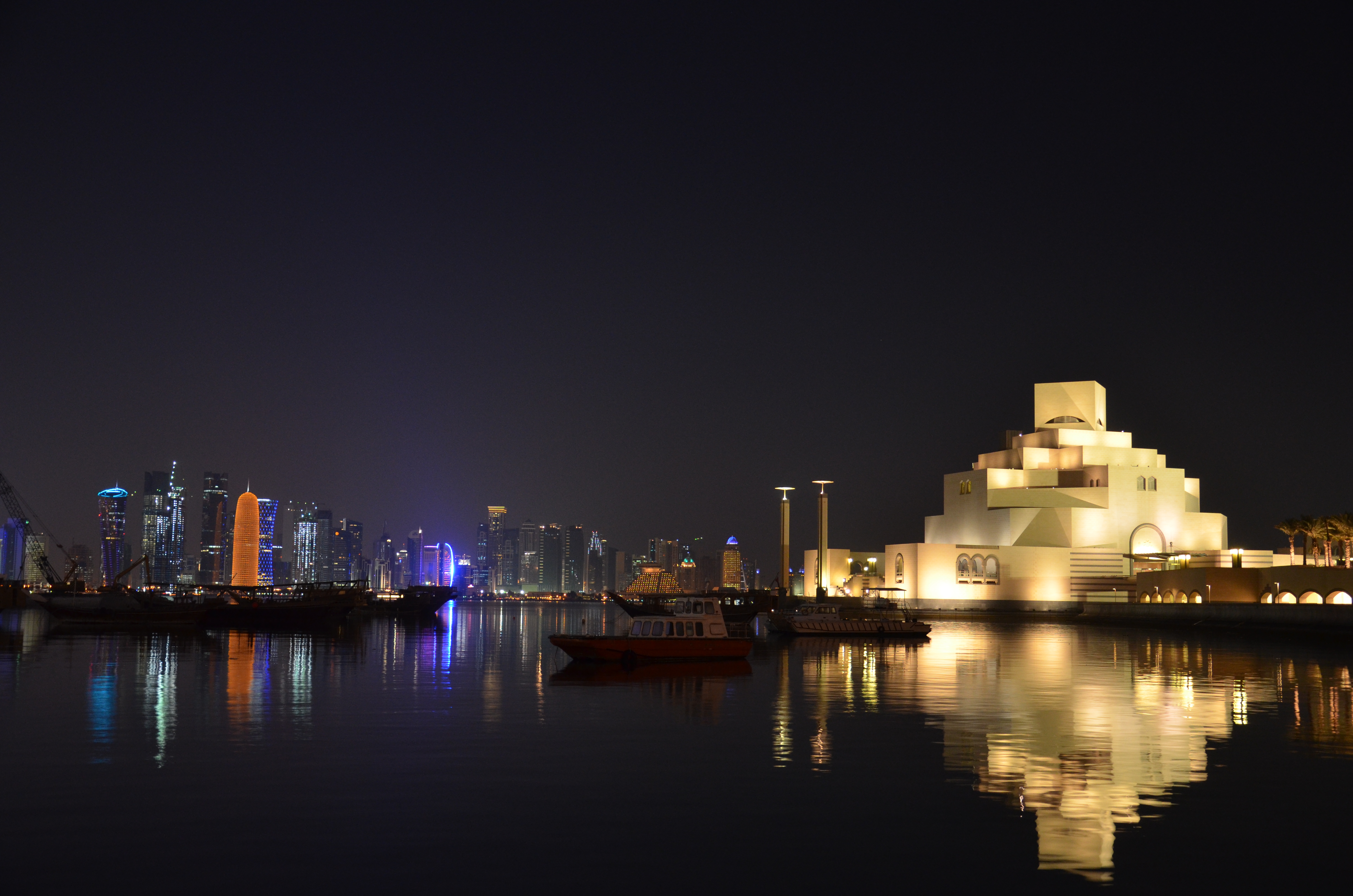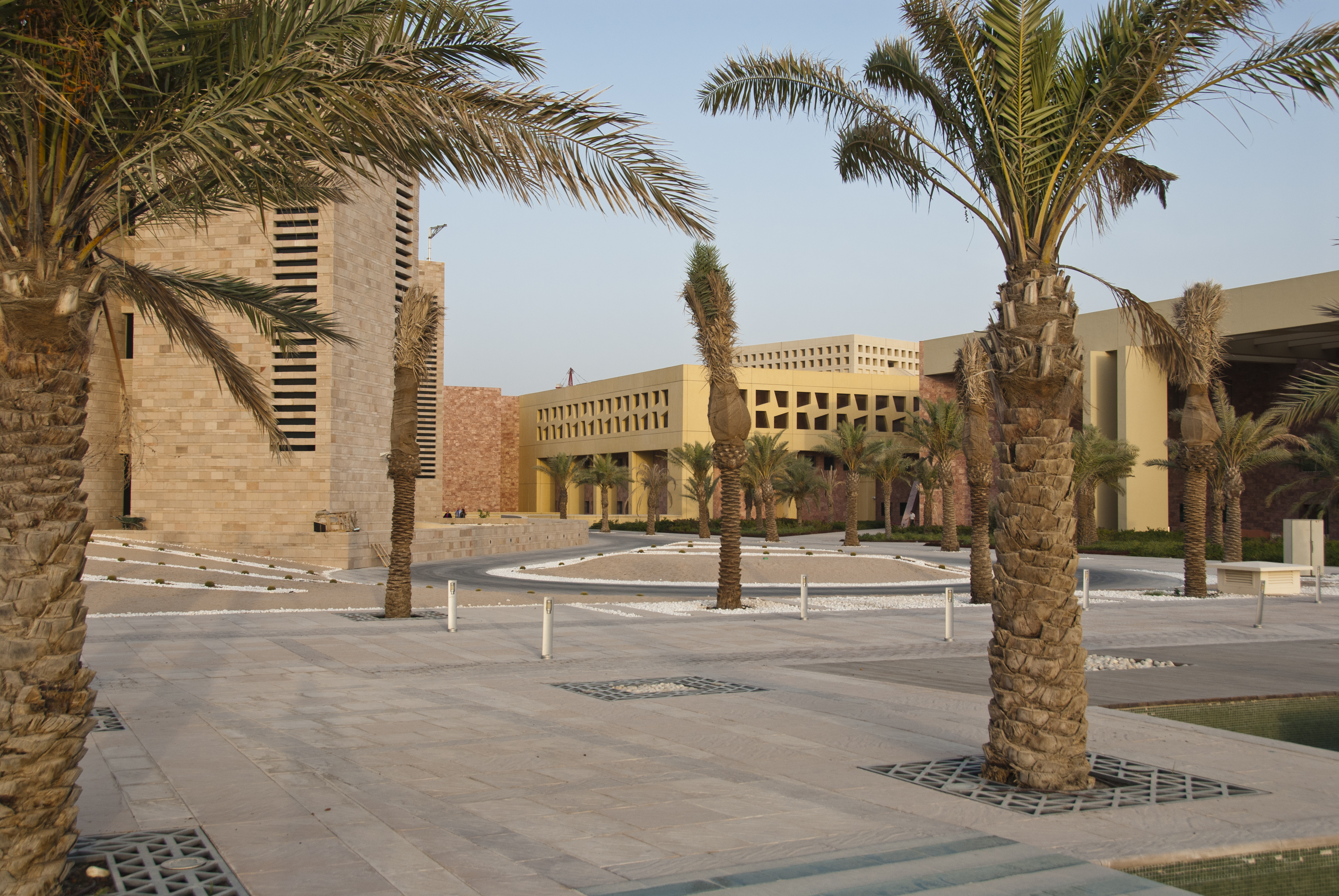Text: Žikica Milošević
It is easy to say that Qatari culture is strongly influenced by traditional Bedouin culture, but there’s something more to it. Namely, after the Greeks, Phoenicians and Romans ruled the Mediterranean Sea in the antiquity, the Arabs from the heart of the Arabic peninsula conquered half of Mediterranean shores. And guess what? They were not a maritime people. With the exception of strong Phoenicians influence in Lebanon, and Berber (sometimes event to the extension of piracy) in Algeria and Morocco, all the other Arabs were fixed to the shores rather than exploiting the vast blue. But not in the Persian Gulf. There lived some other Arabs. Sea-loving ones.



SEA ARABS
It is quite visible both in Qatari flag and emblem. Namely, in the 19th century traditional flag of all Arabic states in the Persian Gulf was defaced by a white stripe by the hoist. Dubai did it, Abu Dabi did it, Qatar did it too. Just the Qatari design was the most interesting, zig-zag pattern. The British wanted to differ the peaceful and friendly boats from the dangerous ones and they wanted all the peaceful emirates to add the white stripe. It means, Qatar already had many boats at sea. And these boats were called dhows and they are on the emblem. They were used for fishing and pearl-hunting.
Apart from this maritime influence which is somehow seldom connected with Arabs, there are more diverging influences in Qatari culture: India did a lot, East Africa did a lot and of course, elsewehere in the Persian Gulf, including Persia, today’s Iran. It is said that “the peninsula’s harsh climatic conditions compelled its inhabitants to turn to the sea for sustenance. “ Thus, there is a distinct emphasis placed on the sea in local culture. Literature and folklore themes are often related to sea-based activities. Sea is a focal point in Qatar, as opposed to, for instance Saudi Arabia, where desert shaped the mind.
ORAL ARTS
Islam, especially non-Shia versions are prohibiting figurative arts, so they had to go elsewehere to find the way to express themselves. Thus oral arts such as poetry and singing were historically more prevalent than painting. But caligraphy and ornamental art in painting became prominent. Also, architecture, especially in connection to repetitive patterns flourished. Since geometric patterns are ideal for textile design, the textile design flourished too. Figurative arts were gradually assimilated into the country’s culture during the oil era. The spectacular Museum of Islamic Art however, articulates the predominant tendencies in Qatari culture. Caligraphy still rules. But it does not apply to the private individuals. Qatar was revealed to be the world’s biggest art buyer in 2011 by The Art Newspaper. And they buy figurative art, but for their homes.
As for the Qatari cuisine, being at such interesting crossroads like this, with Indian and Persian influences, caused Qatari cuisine to be very tasty. Qatari cuisine thus reflects traditional Arab and Levantine cuisine. Is it so strange that, since is it the country between the desert and the sea, that the seafood and dates are staple food items. Machbūs, a meal consisting of rice, meat, and vegetables, is the national dish.